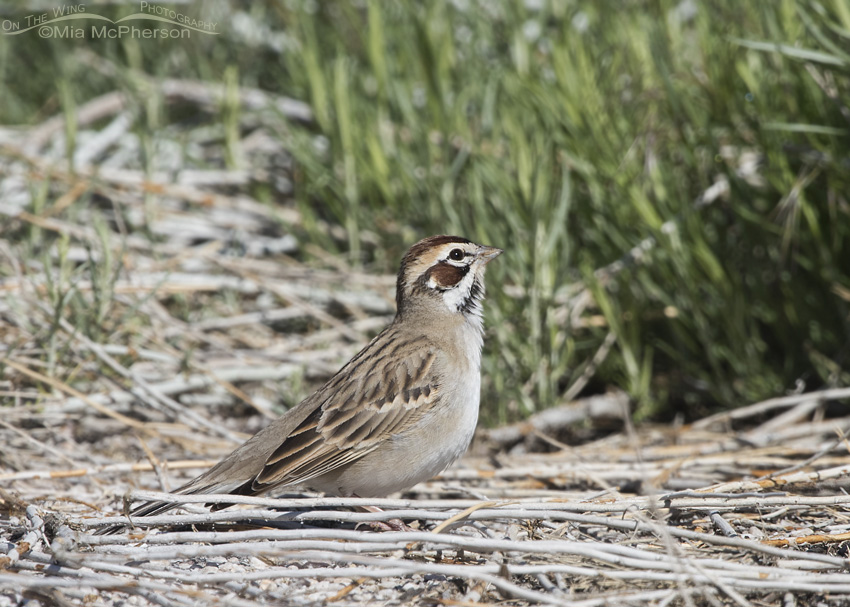 Adult Lark Sparrow – Nikon D810, f7.1, 1/1600, ISO 400, Nikkor 500mm VR with 1.4x TC, natural light
Adult Lark Sparrow – Nikon D810, f7.1, 1/1600, ISO 400, Nikkor 500mm VR with 1.4x TC, natural light
First I have to say that I am very fond of Lark Sparrows, I love the harlequin pattern on their face but I also love hearing their songs whether I see them or not. I thought I would share a few Lark Sparrow facts, a sound recording and of course an image of a Lark Sparrow on the ground.
Here is a recording of a Lark Sparrow singing.
When I am on Antelope Island this time of the year I hear their calls and songs all over the island but mostly where there is sagebrush and rabbitbrush.
Larks Sparrows are the only members of the genus Chondestes.
Currently their breeding range is shrinking but that is because of reforestation and urbanization in the east. Their historical range expanded because because lands were cleared for agriculture and Lark Sparrows prefer open habitat like grasslands, fields, pastures, farmlands, and roadsides.
Lark Sparrows often take over old Sage Thrasher or Northern Mockingbird nests instead of building their own. That may or may not be a way of saving energy during the breeding season, I am not sure. There have been reports though of finding Lark Sparrow eggs mixed in with thrasher and mockingbird eggs in nests which suggests that they share their nest with another species.
Lark Sparrows walk on the ground instead of hopping like other passerines and the only time they do hop on the ground is during courtship. The males even strut like turkeys during courtship. Another courting behavior that is unique to Lark Sparrows is that the male will pass a small twig to the female right before copulation.
They are primarily found in the western parts of Canada and the U.S. during the breeding season but can be found as far east as Ohio, Tennessee and the most northwestern tip of Georgia.
I have been hearing Lark Sparrows for a few weeks now and have seen them on the ground or up on top of the rocks on Antelope Island but I haven’t gotten any high quality images of them yet this year. They are only here for a few months but hopefully I will photograph some soon.
Life is good.
Mia
Click here to see more of my Lark Sparrow photos.


Nice image and interesting info. And thanks for the sound recording—very nice.
I like the colors and color patterns on the faces of these birds, especiaally that deep sienna.
Beautiful image and thanks for the song. I still struggle to ID most by sight and IDing them by song is still a ways off!
Thanks for the fascinating Lark Sparrow facts Mia. Your observation abilities along with your photo skills make for some wonderful insights.
Beautiful photos Mia.
I have a pair in Northern Arkansas, I see them on the fence where my neighbor has cleared more land for pastures. Don’t know if it is the same couple but they have been there for several years. Would like to catch them courting.
New things you learn every day. I have only ever seen a juvenile in the Niagara peninsula. It surely must have lost its way. And yes, it was walking which is what caught my eye. You are a fountain of information!